Huawei TaiShan 200 2280 Server Block Diagram
Here is the block diagram for the server:
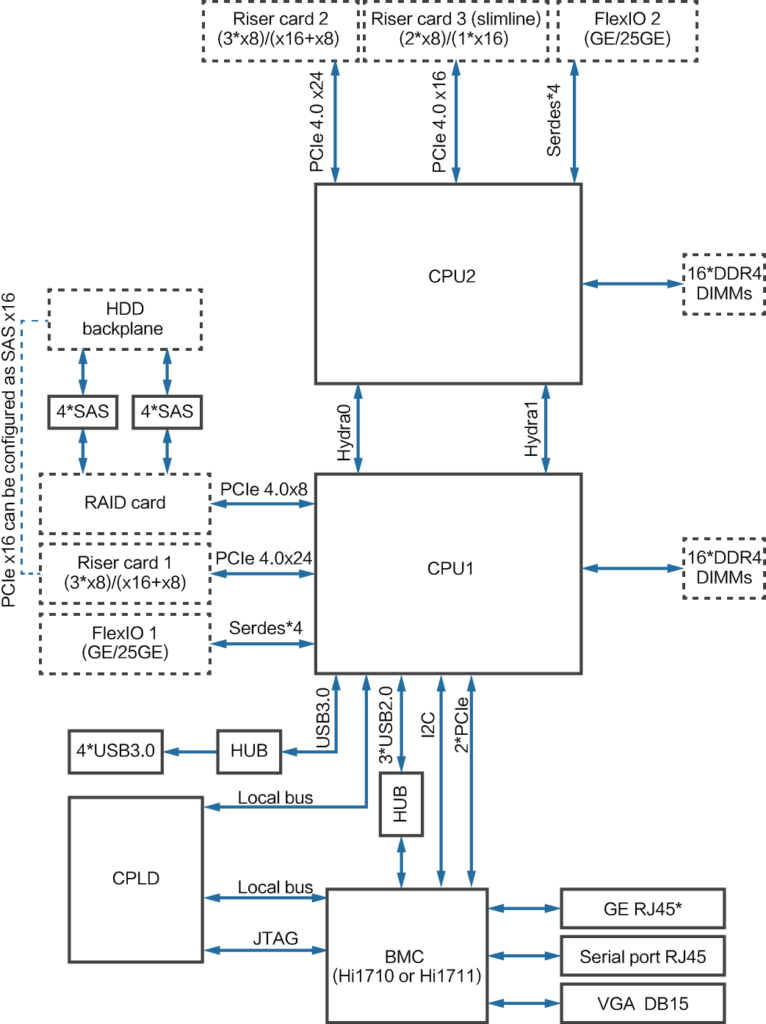
Most of these components we have covered in our hardware overview. There were some challenges with the system. As an example, we could find the HNS adapter on the PCIe bus, but it seems very picky with optics.
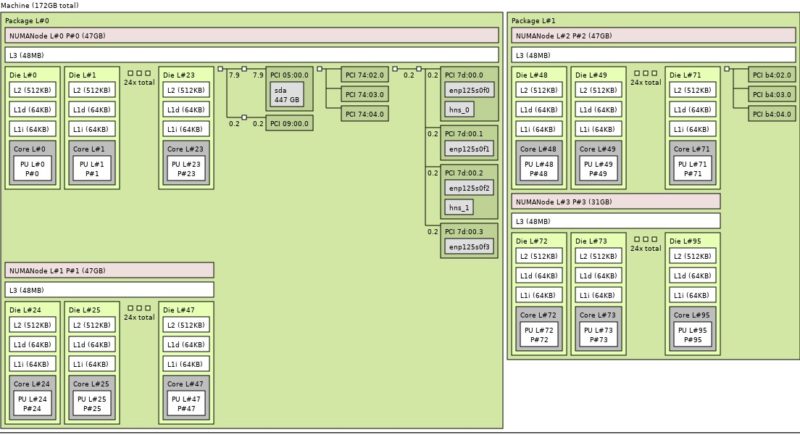
The other one is that the Realtek OCP NIC 3.0 did not show up in the system. Here is a quick lscpu output from the Kunpeng 920, and the above is the topology output from when we initially powered on the system.
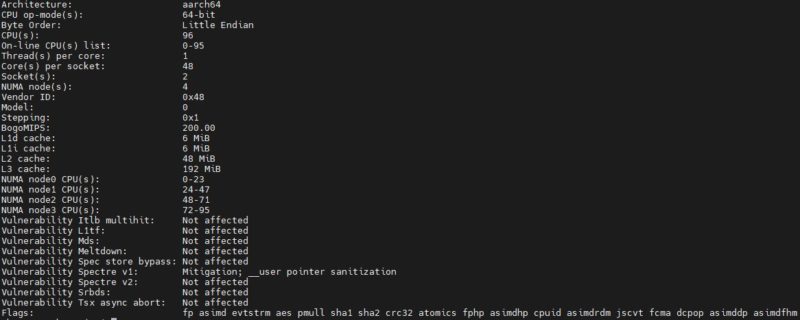
Here is the lshw output for the CPU that we found to be a Kunpeng 920-4826 or a 48 core 2.6GHz part:
*-cpu:0
description: CPU
product: ARM (To be filled by O.E.M.)
vendor: HiSilicon
physical id: 2b
bus info: cpu@0
version: Kunpeng 920-4826
slot: CPU01
size: 2600MHz
capacity: 2600MHz
clock: 100MHz
capabilities: lm
configuration: cores=48 enabledcores=48 threads=48
For those wondering, here is the HiSilicon PCIe Gen4 bridge in this system:
*-pci:0
description: PCI bridge
product: HiSilicon PCIe Root Port with Gen4
vendor: Huawei Technologies Co., Ltd.
physical id: 100
bus info: pci@0000:00:00.0
version: 21
width: 32 bits
clock: 33MHz
capabilities: pci pciexpress msi pm normal_decode bus_master cap_list
configuration: driver=pcieport
resources: irq:27 ioport:1000(size=4096) memory:e6500000-e66fffff ioport:80000200000(size=2097152)
We can post more output if folks are interested in the hardware devices.
Final Words
This turned into a huge piece without even going in-depth on the Kunpeng 920 Arm CPUs. We are going to have the Kunpeng 920 piece in the next few days. While we are still working on getting the system’s performance up, the firmware side is fairly clear. The Huawei server feels more like what we experienced with the Cavium/ Marvell ThunderX2 systems rather than the more modern Ampere Arm servers. This is a server that is fighting us more than normal. It took hours of work just to get what we would consider proper PCIe Gen4 NVMe SSD performance. Our general advice is to get Ampere Altra (Max) over this. Many companies in China are choosing Ampere over these Huawei Kunpeng 920 chips, and it seems like that is for good reason. Ampere Altra Max is twice the core count per socket and is socketed.
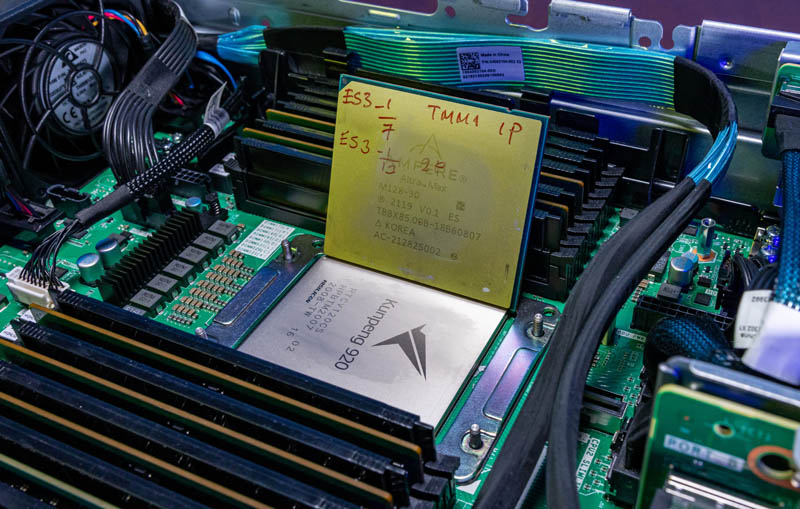
In terms of surprises beyond the CPU, the Broadcom SAS controller is one that perhaps we should have expected, but without a Broadcom NIC onboard nor a standard ASPEED BMC, we thought we would get a different solution.
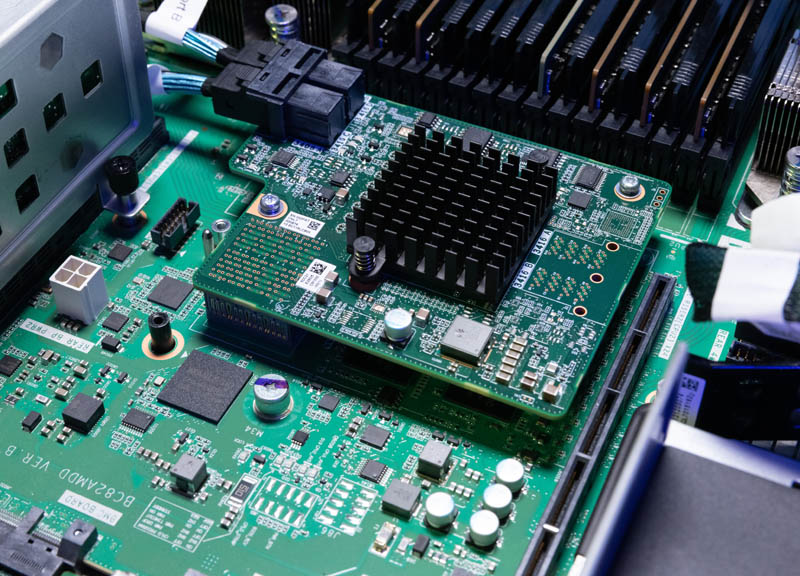
Aside from the HNS 25GbE RDMA adapter, these two cards were clearly the most interesting in the server. We have a quad 1GbE OCP NIC 3.0 card using less than $4 of NICs and a PCIe Gen4 x16 connector. There is also a BMC based on a chip we could not find information on via Google.
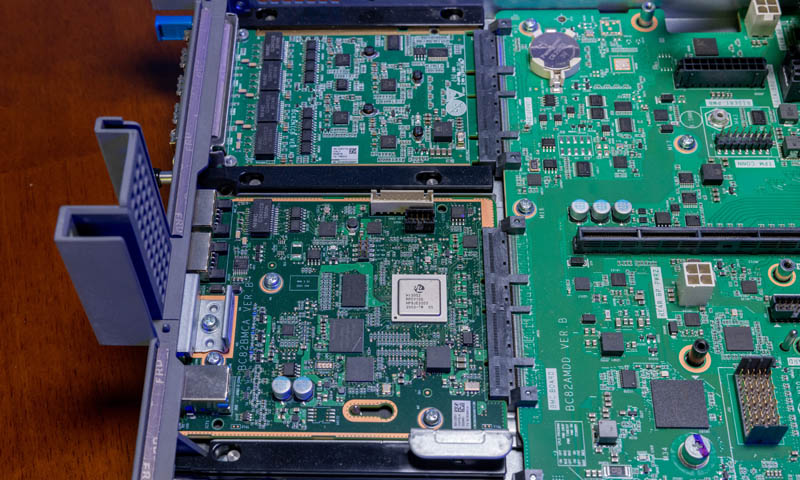
In terms of overall quality, the Huawei TaiShan 200 (2280) was also surprising. Huawei is set up to have margins more akin to Cisco. We were expecting the quality to be similar to Cisco. Instead, from the Chinese domestic server vendors we review, the Inspur servers have higher quality. Lenovo servers are probably a step above Huawei. Then this Huawei server would be third. There are a lot of very good mechanical design elements in the TaiShan 200, but working on the server, there are fairly clear differences.
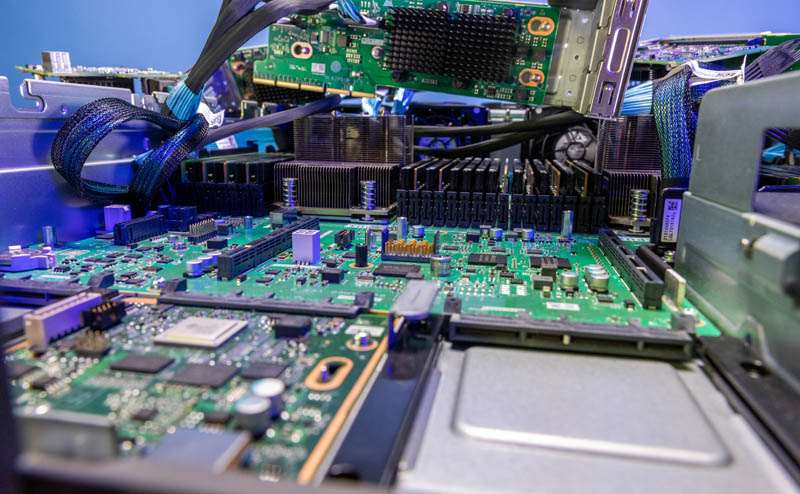
Overall, the hope is that this look at a Huawei server is one that folks find useful. We will have a look at the Kunpeng 920 very soon, then more content as parts arrive and more in this server gets working. Still, there was so much here, and this was also a very ambitious project to undertake, so we had to split it up.
We realize the comments section may get lively on this piece, but please keep it civil. We wanted to simply share this because these servers exist, yet there is not much information on them.




Interesting read. Very strange that the BMC chip is undocumented. Furthermore in the blockdiagram they talk about a different model chip.
I did spot a small error in the writing:
Lenovo servers are probably a step above Huawei, then this Huawei server.
You may not have gotten far enough along in this test for the question be applicable, but does STH routinely monitor network-connected devices for “unexpected” traffic?
@Joeri – I made that a bit clearer. I agree it was chewy wording.
@Bob Niland – we are not tooled to check like a security research firm is. I would expect what you are looking for is rather sophisticated and we do not have a team that can sift through live traffic for days.
Patrick, please, stop filming hanging hardware.
There is no details visible and earlier way of showing thing was a lot better.
Please return to blue doors.
Actually it’s 25-bay backplane.
That’s a catchy headline!
But I fail to find any substance behind it: why exactly is it both forbidden and banned? And from where and under which penalty?
And just in case it’s explained in the video: I never watch those. I come to STH precisely because it can be read.
@abufrejoval
Huawei is sanctioned in the US and you can’t import it legally.
Wow these comments are off the charts. Such an out of control crowd of nerds going squirrelly over circuitry from abroad. I am lost for words. How could you keep your comments section open even after addmjtting you expected such an obvious culling of naysayers … …. …
;)
The worst thing is the cluelessness of the outright IP theft from them. HP had lots of patents on Moonshot and now they co-developed a machine with Fujitsu that looks at lot like the Huawei here. Aren’t y’all tired of the Chinese theft of intellectual property?
I fully expected more Engrish text in this server, but there is no American Megatrands or similar text to be found.
The lscpu result shows 4 NUMA nodes. This is a 2P server, so is that BIOS configuration option or is it just the way the CPU is designed?
What’s a “retimer” in this context? Its a legitimate chip for re-timing signals, but in this usage might be typo ?
@chris s I just wanna know what they’re not showing
@criggie that’s what they’re saying. you’ll see servers like dell’s and others use pcie retimers when they’re taking signals from pcie slots and then converting them to cables. there’s signal loss when you go cpu mobo->riser so then when you go cpu mobo->riser->long cable->front->nvme back plane->nvme SSD you need to boost the signal. a lot of servers use pcie retimers because of this. there’s also loss not just because of distance but also they’ve got loss from each connector
“HUR DUR Evil chinese communist theft of intellectual property !
-Written from my iPhone”
LOL
Sorry Yankees, we Chinese have surpassed you. Talk all you want about theft. You stole earlier tech from us: guns, paper, gunpowder, silk, steel, kite , etc
If it is banned how was it imported?
@ dalong Ning
We stole from you lol… Chinese business and government would steal and clone your grandma if they had a chance and could make profit!
No you have not surpassed us… our cpus, phones, cars and etc are alot better then the crap your country makes.
@Jay the funny thing is there has been 100s of cases where you “Chinese” work for many tech companies and have been caught stealing and sharing what “We” make, if your tech is so superior then please answer this, what do you guys need with anything we have created?
Only reason it’s banned in USA is that Huawei CPUs are secure and do not have CIA bookmarks, like Intel and AMD. Not even taking about backdoor controller Microsoft Pluton.
Loving these comments. There is a reason why the world needs Chinese chips. Just hope for a peaceful future. May be biased because I’m engaged to a wonderful Chinese person.
Huawei makes everything better than any company in the US can make.
I love seeing folks trying different solutions. Sometimes it works and tech gets better. I wonder if Huawei’s choices will have an impact.